News
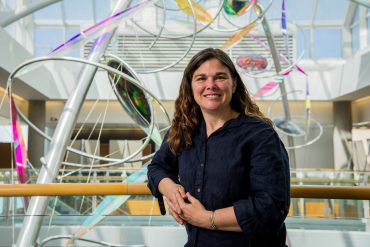
Jan. 11, 2017
Cornelison receives highest honor from White House
It feels good to get recognition, especially when it comes from the White House. This week D Cornelison, a Bond Life Sciences Center researcher and associate professor of biological sciences found out she will receive a Presidential Early Career Award for Scientists and Engineers (PECASE). The award is the highest honor bestowed by the United States government on science and engineering professionals in the early stages of their independent research careers. She joins 102 researchers this year selected by the White House to receive this prestigious award. This is a first for Missouri as a state…
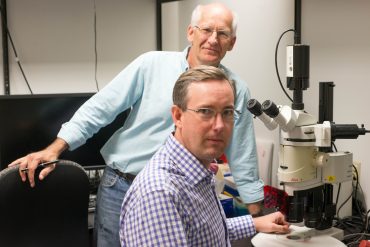
Nov. 17, 2016
Live long and prosper: healthy mitochondria, healthy motor neurons?
Chris Lorson (front) and Mark Hannink (back) collaborate to study the role of mitochondria in motor neuron health, particularly in relation to spinal muscular atrophy, a neuromuscular disorder | photo by Jen Lu, Bond LSC Chris Lorson, a professor of veterinary pathobiology, and Mark Hannink, a professor of biochemistry, want to find a new way to help motor neurons live a long and healthy life. Their question: what’s the relationship between motor neuron sruvival and a cellular component called mitochondria? The two researchers at the Bond Life Sciences Center were awarded preliminary funding from the Bond…
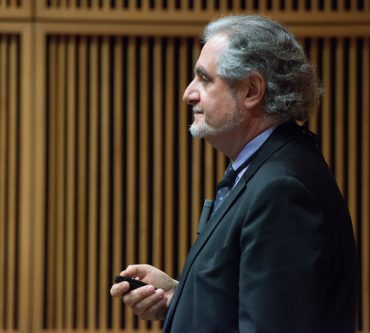
Nov. 10, 2016
Mizzou Epigenetics 2016
Five faculty speakers from five different universities, along with two trainees selected based on the merits of their poster abstracts, presented on current topics in epigenetics. The daylong symposium, titled Mizzou Epigenetics, took place on Wednesday, Nov. 9 at the Bond Life Sciences Center. Kenote speaker Dr. Jean-Pierre Issa talks about epigentic drift at the epigenetics symposium on Nov. 9th, 2016 | photo by Jen Lu, Bond LSC Dr. Jean-Pierre Issa of Temple University, the keynote speaker, said he was a stickler for the definition of classical epigenetics: stable, long-term changes in gene expression. Textbook examples…

Nov. 4, 2016
The eyes have it
Bond LSC scientist works with MU eye surgeon to help people suffering from autoimmune-disease Sjögren’s syndrome By Phillip Sitter | Bond LSC Dr. Carisa Petris stands in the McQuinn atrium of Bond Life Science Center. She and Bond LSC researcher Gary Weisman are using funding from a $100,000 Bond LSC grant to study the mechanisms of an auto-immune disease in the lacrimal glands of the eyes. They are hoping treatments for the disease in mice they study could be applied to humans. | photo by Phillip Sitter, Bond LSC They may not get much…
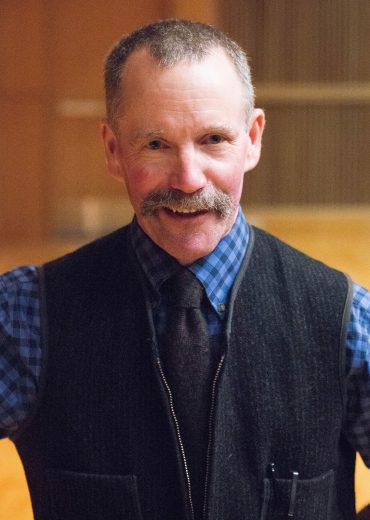
Nov. 3, 2016
“Bucket” actor kicked Hollywood career, has enjoyed life in veterinary medicine
Dr. Peter Ostrum spoke at Bond LSC in celebration of World One Health Day By Phillip Sitter |Bond LSC Dr. Peter Ostrum, who once played the character of Charlie Bucket in 1971’s “Willy Wonka and the Chocolate Factory” —also starring the late Gene Wilder — smiles after giving a lecture to an audience at Monsanto Auditorium in Bond LSC. After “Willy Wonka,” Ostrum did not pursue acting further, and went into a career in veterinary medicine. | photo by Phillip Sitter, Bond LSC The character of Charlie Bucket found his golden ticket to a happy…
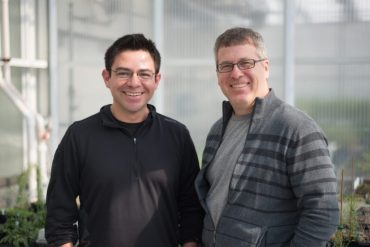
Oct. 25, 2016
Close encounters of the plant protein kind
Bond LSC researchers David Mendoza (left) and Scott Peck (right) are collaborating to develop a new method for studying protein signaling pathways inside plant cells. | photo by Jennifer Lu, Bond LSC By Jennifer Lu | Bond LSC Sometimes, timing is everything. That was the case in what led to a new collaboration between the Mendoza and Peck laboratories. The two researchers were recently awarded $48,250 in seed money from the Bond Life Sciences Center to adapt a new technology to the study of signaling pathways in plant cells. David Mendoza, a Bond LSC researcher and…
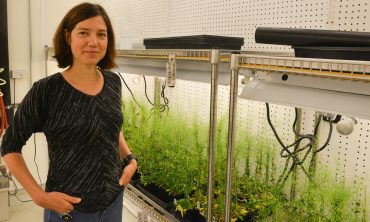
Oct. 11, 2016
The seeds of progress
Efforts to understand the genome of one plant through its many genetic varieties could lead to nutritional improvements in the staple crops billions of people depend on By Phillip Sitter | Bond LSC Ruthie Angelovici stands next to some Arabidopsis thaliana samples in the basement of Bond LSC. She is leading projects to study the relationships between genotypic and phenotypic variation in Arabidopsis and how this affects the amino acid content of the plants, and the resistance of their seeds to drought conditions. | Phillip Sitter, Bond LSC It’s hard to avoid corn, rice or soybeans…

Oct. 10, 2016
Expert Comment: How science made the “three-person” baby possible
Stock image via iStock By Jennifer Lu | Bond LSC A new in-vitro fertilization technique that uses genetic material from three persons made the news last week following the announcement of the successful birth of a now five-month-old baby boy. The process allowed the mother, who had a rare mitochondrial disease known as Leigh Syndrome, to have a child without passing her faulty mitochondrial genes. The nucleus from the mother’s egg was inserted into a prepared donor egg that had healthy mitochondria to make a cybrid, or cytoplasmic hybrid, egg that was then fertilized.
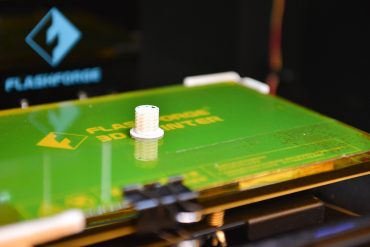
Sep. 28, 2016
An enzymatic future
Inter-departmental MU team aims to improve enzyme use and recovery for spectrum of industrial, medical and military applications By Phillip Sitter | Bond LSC A mostly-finished cylindrical bio-reactor site sits in a 3D printer after the printing has stopped. With a 3D printer in-house, Chung-Ho Lin said that the inter-departmental team he is part of can generate four or five different prototypes a day to test in their bio-reactor model, instead of having to order from different fabrication companies. A basic printer like this used to cost $8,000, but within the last year prices dropped to…
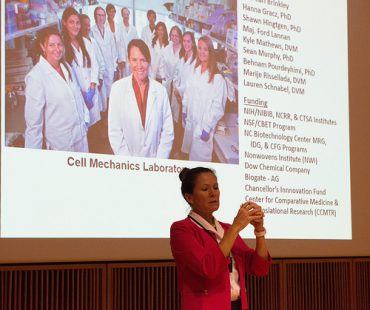
Sep. 16, 2016
Saturday Morning Science returns to Bond LSC
This past weekend not only ushered in Mizzou’s first home game of the season, but the return of Saturday Morning Science. The weekly lecture series connects the Columbia community with MU scientists and their research, from bio-engineering to volcanology to anthropology and linguistics. Elizabeth G. Loboa, dean of the College of Engineering, kicked off the semester with her talk on tissue engineering in the age of drug-resistant bacteria. Tissue engineering is about turning cells into tissues and organs, for example, fat-derived stem cells into muscle, bone and cartilage. The tissues take shape on tiny scaffolds that are bio-compatible…

Sep. 2, 2016
Building blocks of life in the lab could revolutionize life for us all
NASA, NIH-funded work seeks to understand bio-chemical mechanisms of life on Earth, and among the stars By Phillip Sitter | Bond LSC Donald Burke-Agüero stands in his office in Bond LSC, holding a model of an RNA protein structure. Burke-Agüero studies the bio-chemical functions of RNA, and how those functions might be able to be artificially designed or replicated. | Phillip Sitter, Bond LSC Any child obsessed with Legos knows the fun of creation bound only by imagination and the size or variety of the blocks within their pile. For some scientists, that spirit extends…
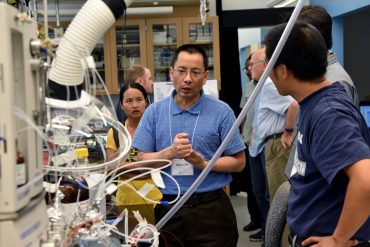
Aug. 15, 2016
Research Core offers new capabilities
Grand opening highlights specialty of large-scale metabolite profiling By Phillip Sitter | Bond LSC Dr. Zhentian Lei , assistant director and assistant research professor of the MU Metabolomics Center, provides an overview of an ultra high-pressure liquid chromatograph coupled to mass spectrometry for the large-scale profiling of metabolites at the University of Missouri Metabolomics Center open house on Aug. 12. | photo by Zivile Raskauskaite, Bond LSC You might think you’ve entered the inside of a pinball machine for a moment when you enter lab 243 at the Bond Life Sciences Center. But the wires…